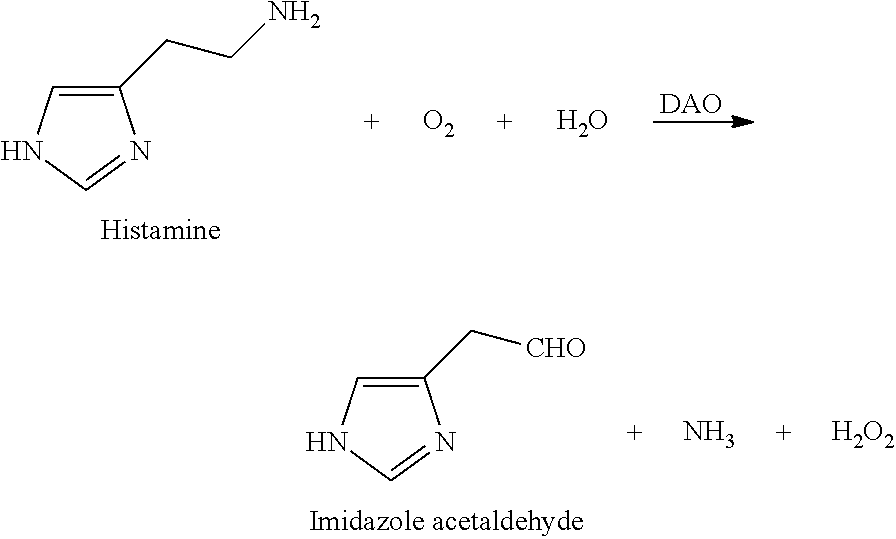Diamine oxidase for use in the treatment or prevention of attention deficit hyperactivity disorder (ADHD)
a technology of oxidase and diamine, which is applied in the direction of oxidoreductases, enzymes, biochemical equipment and processes, etc., to achieve the effect of improving symptoms
- Summary
- Abstract
- Description
- Claims
- Application Information
AI Technical Summary
Benefits of technology
Problems solved by technology
Method used
Image
Examples
example 1
[0098]DAO tablets were prepared from microgranules containing 4% DAO, with the following formula:
[0099]
DAO 4 mgMannitol40 mgMicrocrystalline cellulose25 mgHydroxypropyl cellulose10 mgCorn starch10 mgCitric acid 6 mg
[0100]The microgranules were coated with hydroxypropyl methylcellulose.
[0101]To make the tablets, the DAO microgranules were compressed with microcrystalline cellulose and sodium stearyl fumarate.
example 2
[0102]DAO tablets were prepared from microgranules containing 4% DAO and 10% caffeine with the following formula:
[0103]
DAO 4 mgCaffeine10 mgMannitol35 mgMicrocrystalline cellulose15 mgHydroxypropyl cellulose10 mgHydroxypropyl methylcellulose10 mgAscorbic acid 6 mg
[0104]The microgranules were coated with a copolymer of methacrylic acid.
[0105]To make the tablets, the microgranules of DAO were compressed with microcrystalline cellulose and magnesium stearate.
example 3
[0106]DAO sachets were prepared containing 100 or 150 mg of DAO microgranules prepared as in the first part of example 1.
PUM
| Property | Measurement | Unit |
|---|---|---|
| molecular weight | aaaaa | aaaaa |
| pH | aaaaa | aaaaa |
| threshold | aaaaa | aaaaa |
Abstract
Description
Claims
Application Information
 Login to View More
Login to View More - R&D
- Intellectual Property
- Life Sciences
- Materials
- Tech Scout
- Unparalleled Data Quality
- Higher Quality Content
- 60% Fewer Hallucinations
Browse by: Latest US Patents, China's latest patents, Technical Efficacy Thesaurus, Application Domain, Technology Topic, Popular Technical Reports.
© 2025 PatSnap. All rights reserved.Legal|Privacy policy|Modern Slavery Act Transparency Statement|Sitemap|About US| Contact US: help@patsnap.com

